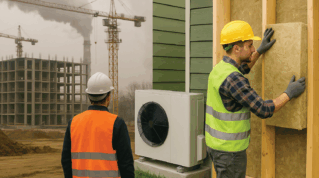Close contacts of all Covid cases should take daily lateral flow tests for a week meaning they can stay in the classroom if they are negative under new rules introduced today.
Education leaders were told of the “new national approach” in an email from the Department for Education (DfE) sent at around 5pm yesterday.
It states fully-vaccinated adults and children aged between five and 18 years and 6 months should take a lateral flow test every day for a week instead of self-isolating after coming into contact with someone who has Covid.
Close contacts will be expected to report the results online each day and can attend their education provider following a negative result.
Those that test positive should self-isolate and order a confirmatory PCR test. A negative PCR result would override the initial lateral flow test.
The daily testing applies whether the contact tests positive for “Omicron or not”. Staff who are close contacts but not doubled-jabbed should isolate for ten days.
Previously, close contacts of Omicron cases were told to self-isolate for up to 10 days, while close contacts of other variants were advised to take a PCR test.
The guidance states that close contacts will be notified by NHS Test and Trace. It is unclear how the service will know which students and staff are close contacts without the education provider playing a role in providing that information.
Daily contact testing was suspended for education settings in January. Public Health England said the balance between risks and benefits was “unclear”.
The DfE told leaders in its email last night that daily testing for Covid contacts will “help protect education settings by reducing transmission and will also help keep pupils in face-to-face education”.
Test shortages
However, people in England are currently unable to order test kits online due to “exceptionally high demand” following prime minister Boris Johnson’s national address last night.
The DfE states that all staff and secondary aged students should have access to a box of seven lateral flow tests.
Additional tests are “available through the standard ordering process” or can be ordered “emergency replenishment” via 199.
Social media was yesterday flooded with numerous reports of people unable to access the ordering portal.
They are met with a message stating: “Sorry, there are no more home tests available right now. Try again later. Or, you can go back and try to book a test site appointment instead.”
The UK Health Security Agency (UKHSA) has warned: “Due to exceptionally high demand, ordering lateral flow tests on gov.uk has been temporarily suspended to fulfil existing orders.”
It advised those in need to collect kits from local pharmacies, community site and “some schools and colleges.”
The guidance adds that for pupils with SEND who struggle or are unable to swab daily, “settings should work with students and their families to agree an appropriate testing route, such as assisted swabbing”.
Air cleaning ‘marketplace’ launched
The Department for Education has launched an online “marketplace” for schools and colleges to buy purifiers to help tackle Covid, recommending units which cost up to £1,170 each.
But the units are not available to private training providers.
The government yesterday confirmed deals with six approved suppliers to sell two recommended units for state funded education settings at agreed prices, with colleges now able to place orders.
The products are the Dyson Pure Cool Formaldehyde TP09, which costs £424.82 per unit, and the Camfil City M, costing £1170 per unit. Multiple general retailers are selling the Dyson unit for around £600 online.
Both products are said to remove more than 99.9 per cent of ultrafine particles in the air.
The DfE told leaders by email: “In the very few cases where an area of poor ventilation has been identified and this cannot be resolved through opening windows and doors or minor repair works, it may be appropriate to consider the use of an air cleaning unit as an additional mitigation whilst further remedial work is undertaken to improve ventilation.
“However, it should be noted that they are not a substitute for ventilation and should never be used as a reason to reduce ventilation.”
You can access the air cleaning marketplace here.

















“Both products are said to remove more than 99.9 per cent of ultrafine particles in the air”.
Sounds comforting until you stop to think about it.
How long does it take for all the air in a room to pass through a filtration unit?
How does its performance change in relation to room size / layout / volume / occupation density and frequency?
How do they perform in conjuction with air conditioning where the same air might circulate across multiple rooms?
Does it have any effect on a droplet landing on a surface?
How often should filters be replaced? (approximate £60 cost each)
Is it dangerous to handle a used filter if it contains virus?
How much additional energy will these devices use?
(Ultrafine is defined as less than 0.1 micron (Dysons one says it will “remove 99.97% of particles as small as 0.3 microns). Corona particles are estimated to range from 0.1 to 0.5 microns.)
How much will this cost and what is the measurable benefit?
Is this really just an experiment and how were potential suppliers sourced, efficacy measured and prices agreed?